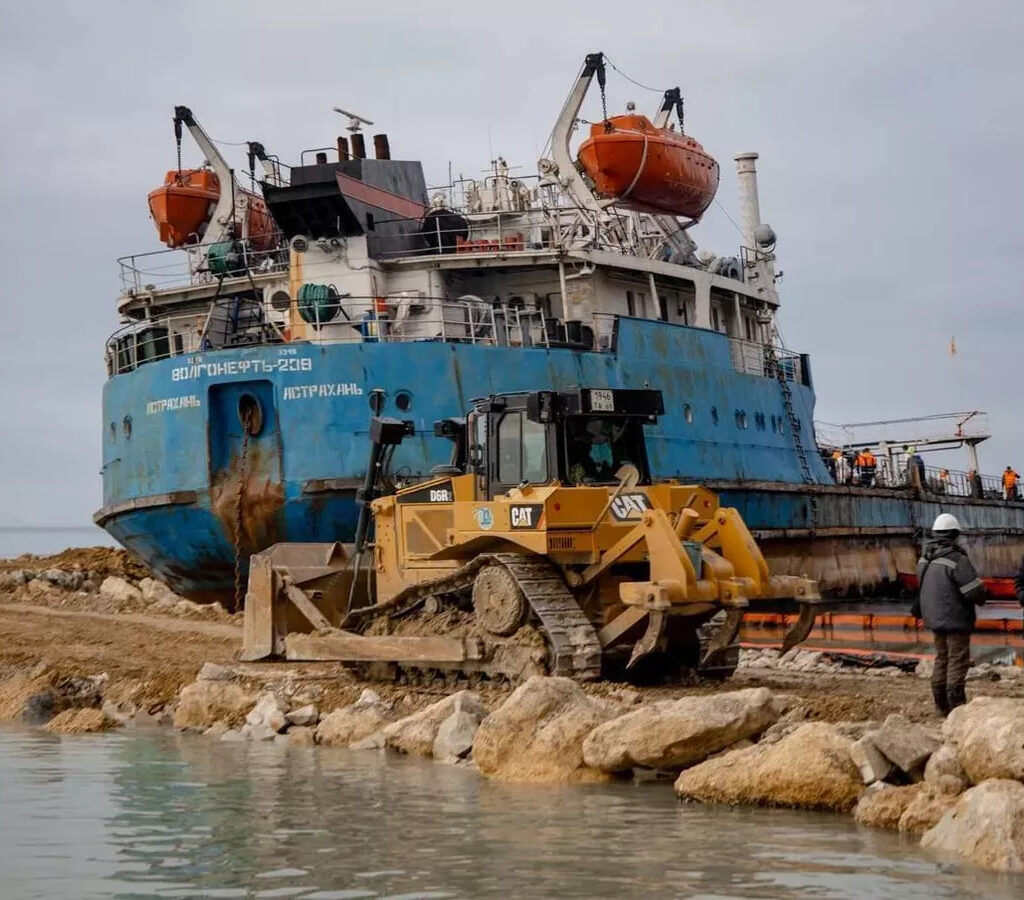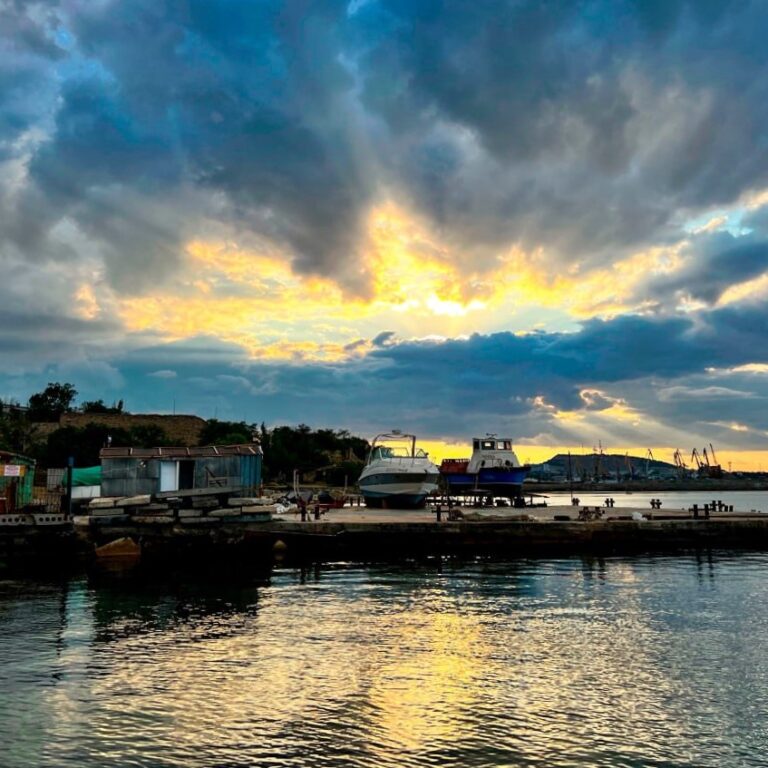The second half of March was marked by further statements from the aggressor’s authorities and propaganda regarding the future fate of the remains of the tankers “Volgoneft-212” and “Volgoneft-239”, which sank on December 15 south of the Kerch Strait.
Let us recall that the death of these vessels, which led to a large-scale environmental disaster, occurred due to their obvious unseaworthiness, covered up by the port authorities and the “Russian Classification Society”.
At the same time, “Volgoneft-212” broke and both of its parts sank, and after its break, the bow of “Volgoneft-239” sank; the stern of this tanker, washed ashore, has been successively sawed up for scrap metal over the past two months.
We have previously pointed out many times that further pollution of the sea with fuel oil from the sunken parts of tankers is inevitable in any scenario – both if the ships are left on the bottom and if they are raised. At the same time, the fuel oil in the tanks of both ships should have thickened and now it is impossible to simply pump it out.
And so on March 21, the aggressor’s government commission announced the “approval of the final version of the disposal of fuel oil from the sunken fragments of tankers.” Its essence boils down to the fact that the protruding parts will allegedly be cut off from the ships, after which they will be closed with special engineering structures, cofferdams, creating a hermetic space around the tankers.
And then the utilizers will allegedly heat and pump out the fuel oil, after which they promise to remove both the cofferdams and the “defatted” remains of the tankers themselves.
In this “stream of optimism” from Vitaly Savelyev, the deputy chairman of the aggressor’s government, what is noteworthy is not the promises to install cofferdams “before the autumn storms”, but the stipulation that “next year, upon receipt of the technology, we will try to ensure the lifting of both the cofferdams and all three sunken parts.”
Who and how the aggressor is going to obtain this technology is a rather rhetorical question; however, something else is more important here.
A process such as installing cofferdams, especially “for wintering”, requires a preliminary thorough study of the bottom, currents, and the like, which the aggressor did not do, at least due to the lack of the technology mentioned by Savelyev.
In addition, against the backdrop of these stories about cofferdams, the owner of the sunken “Volgoneft-239”, “Volgatransneft”, urgently announced that it “plans to remove the bow of the vessel from the waters on its own under a contract with a contractor, with the work scheduled for completion in June 2025.”
The company’s statement said that it “does not attract government funding” and “notified all interested parties, including officials, in accordance with the established procedure, about the conclusion of the relevant contract for the removal of the bow,” and that “the company’s management reported on all currently completed and upcoming activities during a meeting held on this topic at the Russian Ministry of Transport on March 18.”
It follows directly from this “rebellion on the knees” that no one was interested in the opinion of “Volgatransneft” regarding the above-described multi-billion dollar scam with cofferdams, which by the way, with great difficulty, but ensured the sawing up of the stern of its tanker on the shore.
Who will be entrusted with mastering hundreds of billions on this project, creating yet another threat to the long-suffering ecology of the Black Sea – the nearest time will show.








